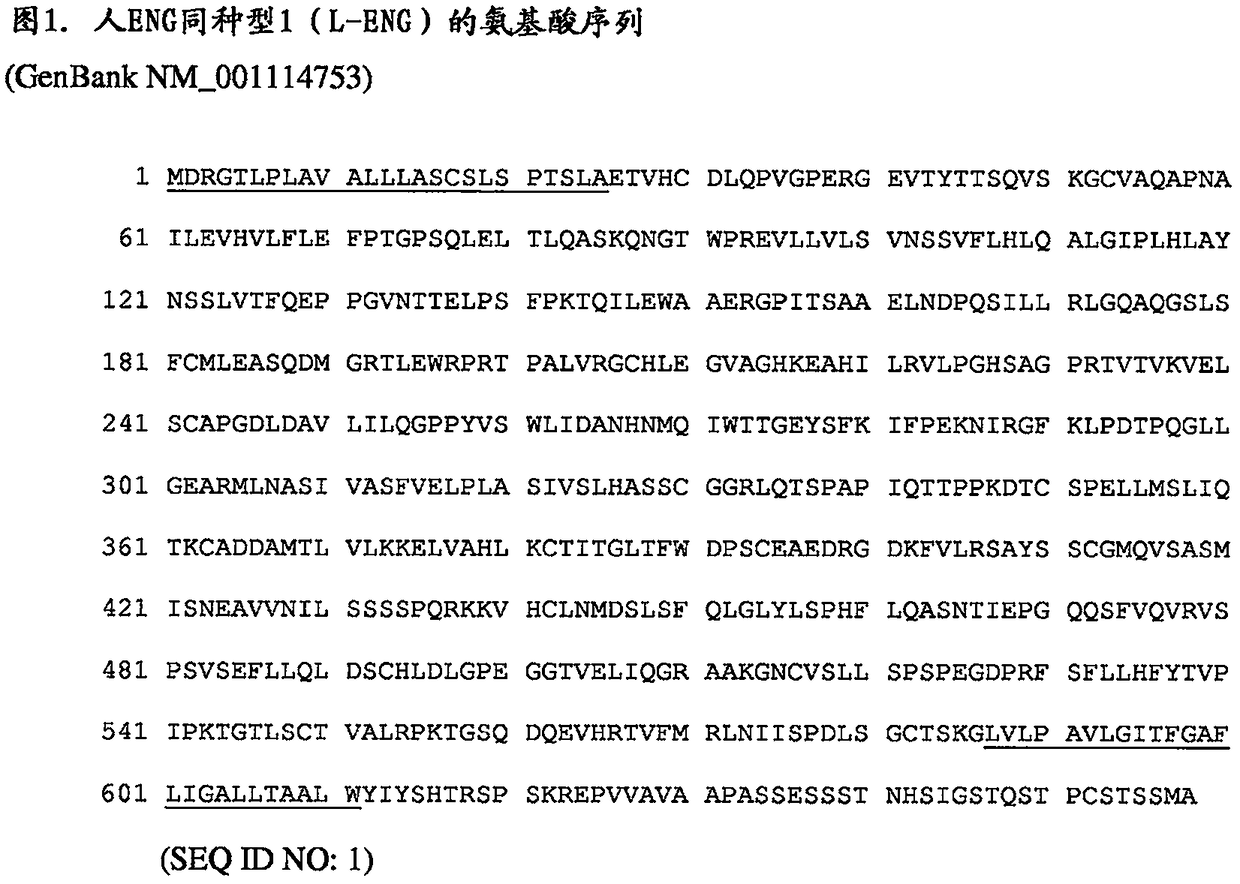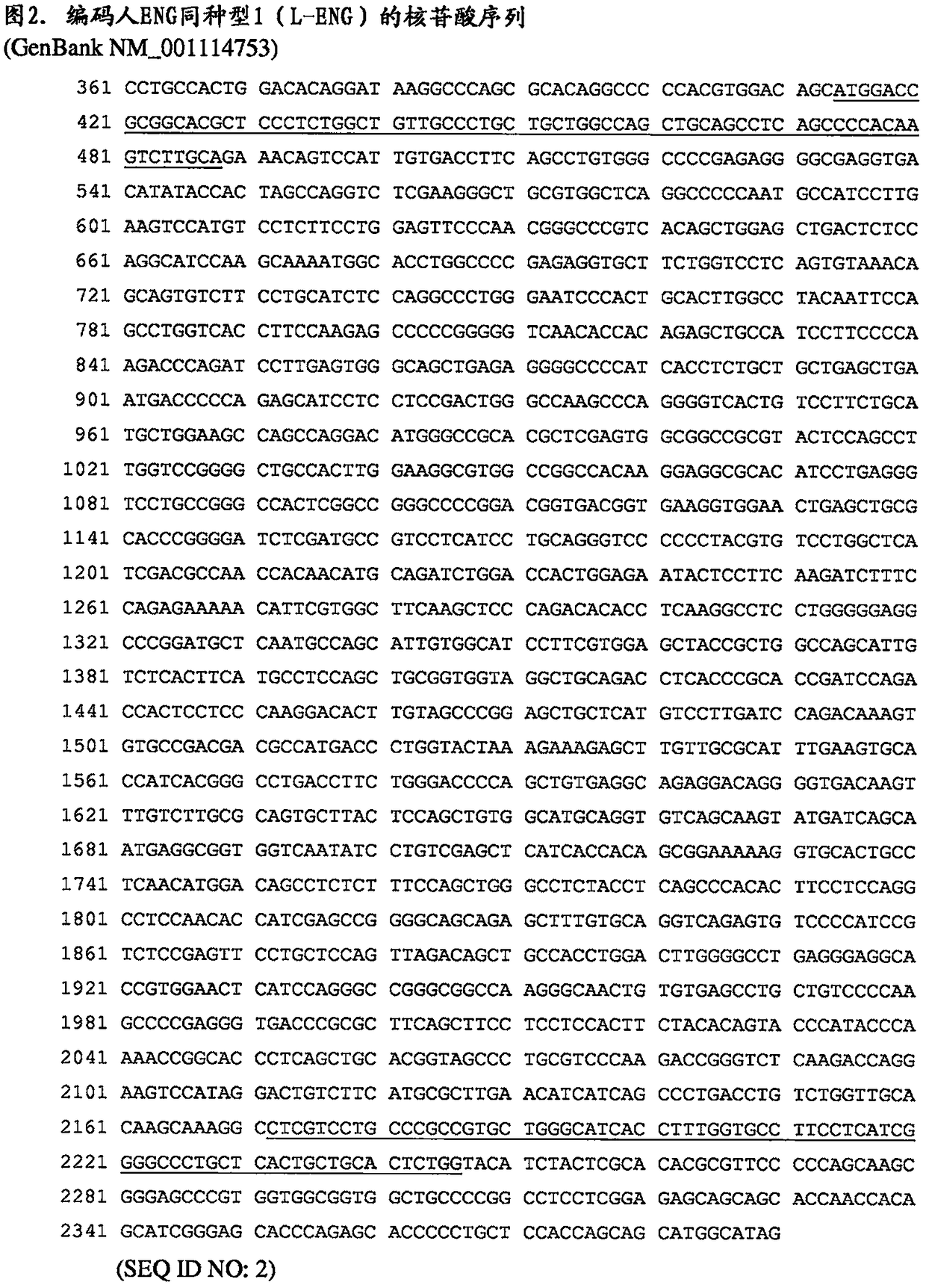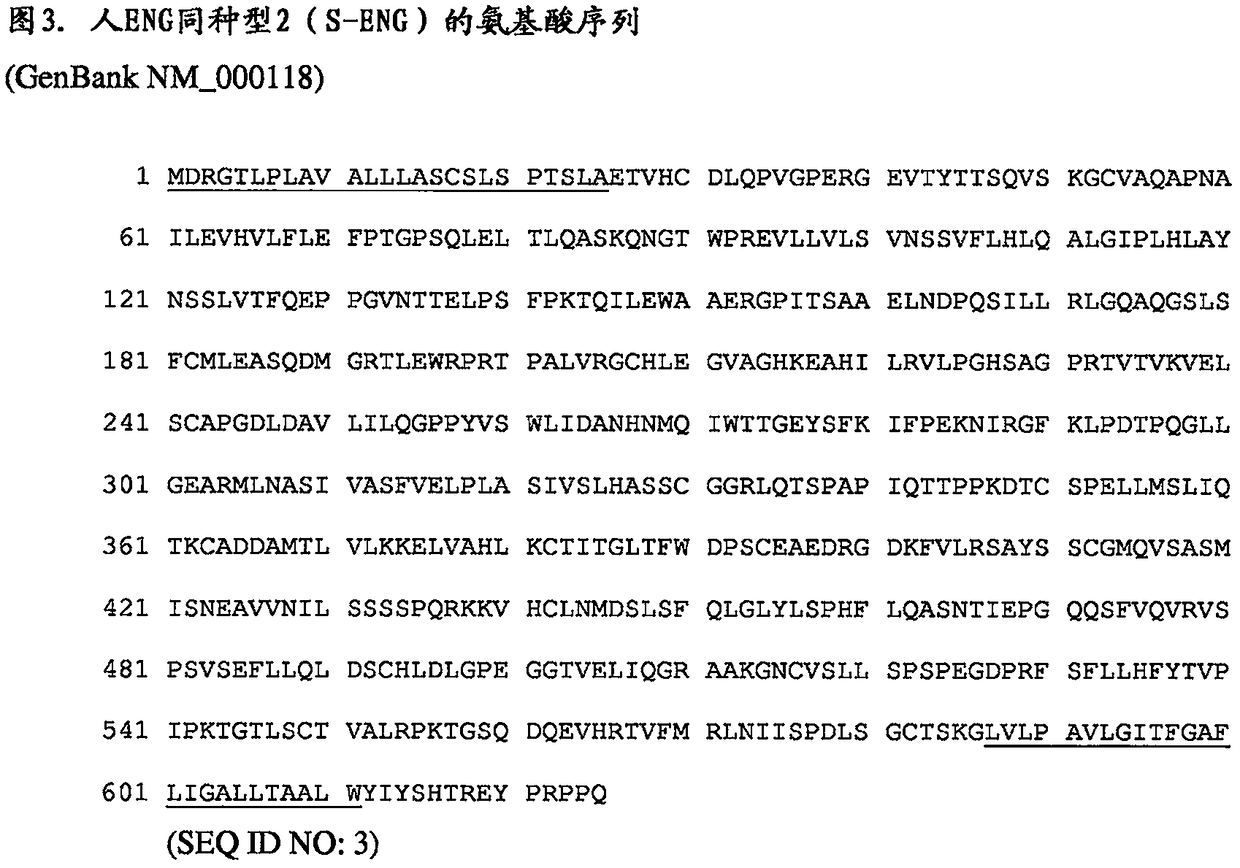Endoglin polypeptides and uses thereof
An endoglin and immunoglobulin technology, applied in the field of endoglin polypeptides
- Summary
- Abstract
- Description
- Claims
- Application Information
AI Technical Summary
Problems solved by technology
Method used
Image
Examples
Embodiment 1
[0175] Example 1: Expression of a fusion protein comprising the full-length extracellular domain of human ENG
[0176] Applicants constructed a soluble endoglin (ENG) fusion protein (hENG(26 to 586)-hFc) in which the full-length extracellular domain (ECD) of human ENG was (Figure 9, SEQ ID NO: 9) linked to the human IgG1 Fc domain (Figure 11, SEQ ID NO: 11). hENG(26 to 586)-hFc was expressed by transient transfection into HEK 293 cells. Briefly, HEK 293 cells were set up in a 500ml rotator in 6×10 5cells / mi in Freestyle medium (Invitrogen) in a volume of 250 ml and cultured overnight. The next day, these cells were treated with a DNA:PEI (1:1) mixture (at a final DNA concentration of 0.5 ug / ml). After 4 hours, 250 ml of medium was added, and the cells were cultured for 7 days. Conditioned media was harvested by spinning down the cells and concentrated. For expression in CHO cells, the ENG polypeptide construct was transfected into the CHO DUKX B11 cell line. Clones are t...
Embodiment 2
[0184] Example 2: Expression of Fusion Proteins Including the Full-Length Extracellular Domain of Murine ENG
[0185] Applicants constructed a soluble murine ENG fusion protein (mENG(27-581)-mFc), in which the full-length extracellular domain of murine ENG ( Figure 10 , SEQ ID NO: 10) with mouse IgG via the smallest possible linker between these domains 2a The Fc domain is fused. mENG(27 to 581)-mFc was expressed by transient transfection into HEK 293 cells.
[0186] Selected versions of mENG(27 to 581)-mFc use a TPA leader sequence with Figure 16 The unprocessed amino acid sequence (SEQ ID NO: 19) is shown and encoded by the nucleotide sequence (SEQ ID NO: 20) shown in Figure 17 . Purification was achieved by purification of conditioned medium from transfected HEK 293 cells followed by protein A chromatography. The purity of the samples was assessed by analytical size exclusion chromatography, SDS-PAGE, silver staining and Western blotting.
Embodiment 3
[0187] Example 3: Selective binding of BMP-9 / BMP-10 to proteins comprising a full-length extracellular ENG domain
[0188] ENG is considered a co-receptor and is generally believed to function by facilitating the association of TGF-β1 and TGF-3 to form a multiprotein complex of type I and type II receptors. To investigate the possibility of isolated ENG directly binding ligands, applicants used the surface plasmon resonance (SPR) method (Biacore TM instrument) to screen captured proteins including the full-length extracellular domain of ENG for binding to various soluble human TGF-β family ligands.
[0189]
[0190] *[hBMP-9], [hBMP-10] = 2.5nM; all other ligands detected at 100nM
[0191] **[hBMP-9], [hBMP-10] = 2.5nM; all other ligands detected at 25nM
[0192] ***[hBMP-9], [hBMP-10] = 0.5 nM; [hTGF-β1], [hTGF-β2], [hTGF-β3] = 10 nM; all other ligands detected at 25 nM
[0193] As shown in this table, the binding affinity of hENG(26 to 586)-hFc for hBMP-9 and hBMP-10 ...
PUM
 Login to View More
Login to View More Abstract
Description
Claims
Application Information
 Login to View More
Login to View More - R&D Engineer
- R&D Manager
- IP Professional
- Industry Leading Data Capabilities
- Powerful AI technology
- Patent DNA Extraction
Browse by: Latest US Patents, China's latest patents, Technical Efficacy Thesaurus, Application Domain, Technology Topic, Popular Technical Reports.
© 2024 PatSnap. All rights reserved.Legal|Privacy policy|Modern Slavery Act Transparency Statement|Sitemap|About US| Contact US: help@patsnap.com










